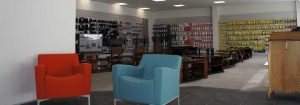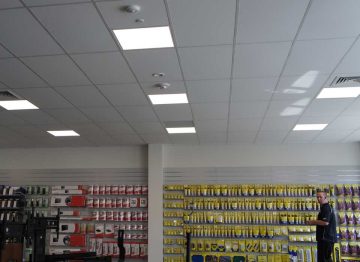Find out how Pudney & Lee reduced around 30% of their building energy use.

Lighting Pudney & Lee in
Wellington, New Zealand
We knew a bit about LED, so had high expectations, but it turned out even better than expected – we were blown away by the quality of light LED provides – people really notice the difference.- Graham Pudney, MD



Customer challenge
Nationwide distributor Pudney & Lee represents some of New Zealand's leading consumer electronics accessories – so when building a new office complex to accommodate their expanding company, they wanted the latest in lighting technology.
The right lighting
Pudney & Lee selected the Philips Smart Panel. Philips then compiled a lighting design incorporating the Smart Panel for Pudney & Lee's open plan office space, meeting rooms and corridors. These energy-efficient LED luminaires provide high quality, uniform light, which is essential for general office environments. The panels have a slim profile, so don't add bulk to the ceiling.
With Philips LEDs able to provide different shades of white, Pudney & Lee were able to tailor the ,warmth' of the light to different settings. For task and work areas, a cooler white was used, while in hallways and communal areas (like the bathrooms and tea room) a warmer, more yellow light was used. As well as breaking up the spaces, the warmer light helps to create more relaxed spaces for staff.
In the bathrooms and main entry, Philips Greenspace LED Downlights were used. With a simple and elegant design, the downlights provide high-quality energy-efficient lighting. The diffused cover enhances the light's uniformity and reduces glare. Compared to CFL downlights, Philips' Greenspace LEDs can provide energy savings of up to 60%, which provide a significant cost savings over their 30,000-hour lifetime. The energy-efficiency of the lighting can also be improved with smart controls, which can achieve additional savings of up to 30%.
“Rather than hounding people to remember to turn off the lights, we installed Philips OccuSwitch sensor technology. These turn the lights off once there has been no movement in the room for a certain amount of time – maximising the life of our lighting and keeping our running costs down,” says Graham Pudney. The energy efficiency of the lighting and technology was enhanced with good lighting design.



